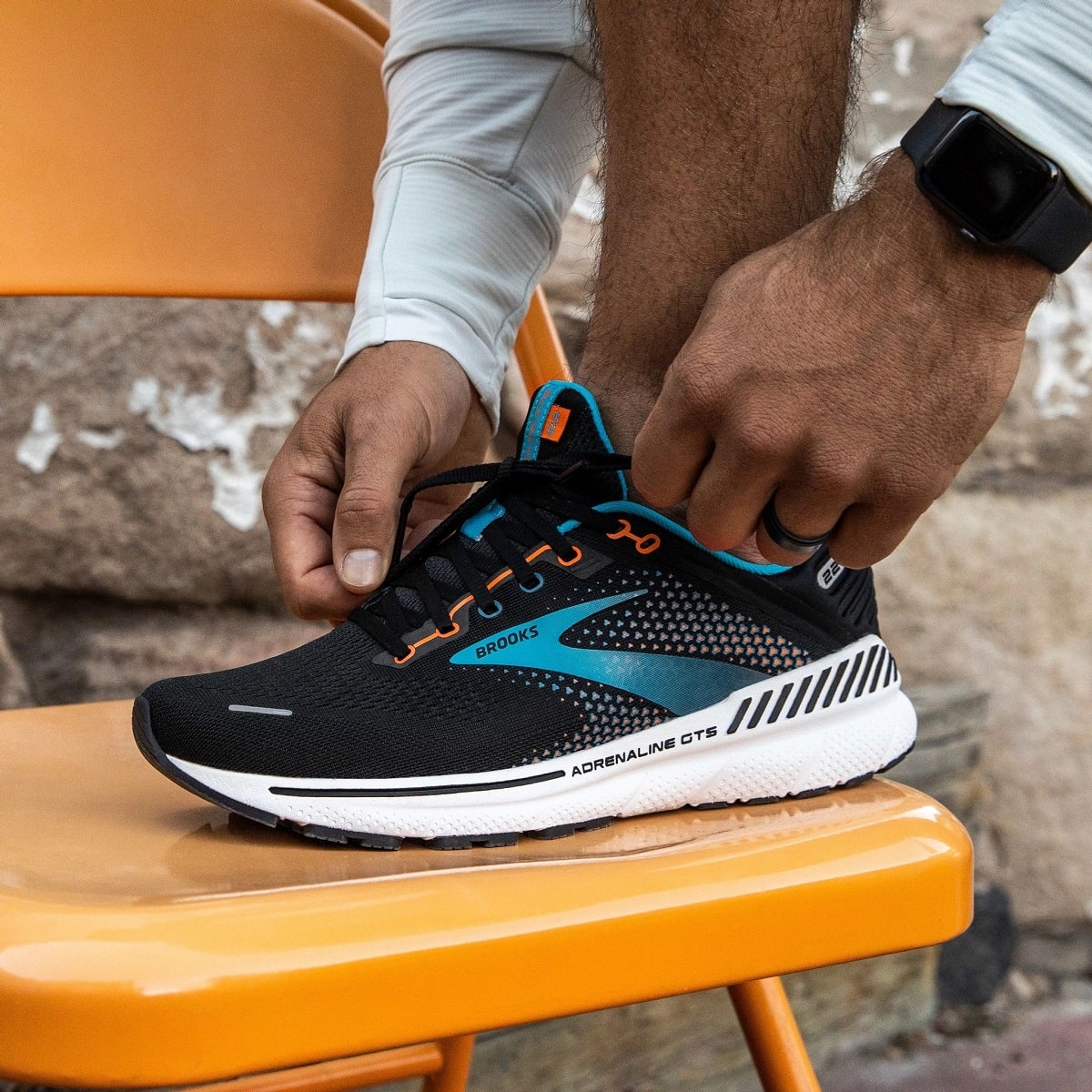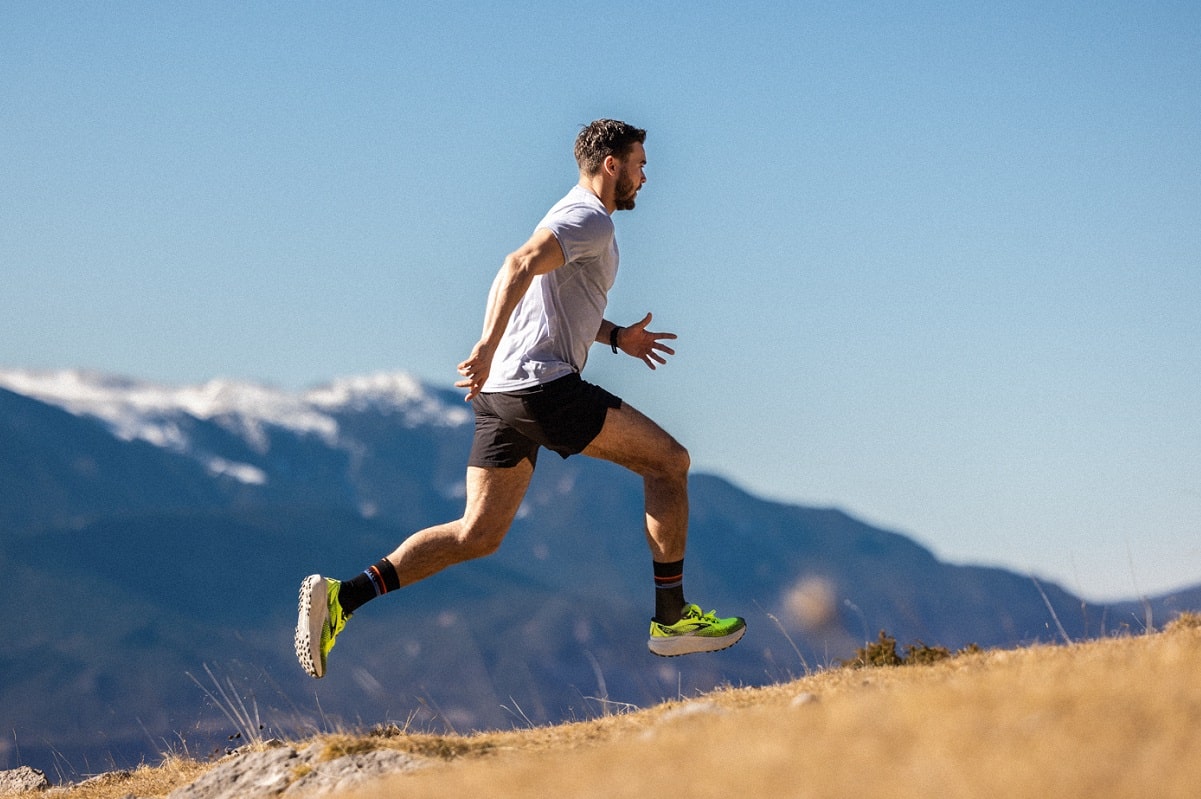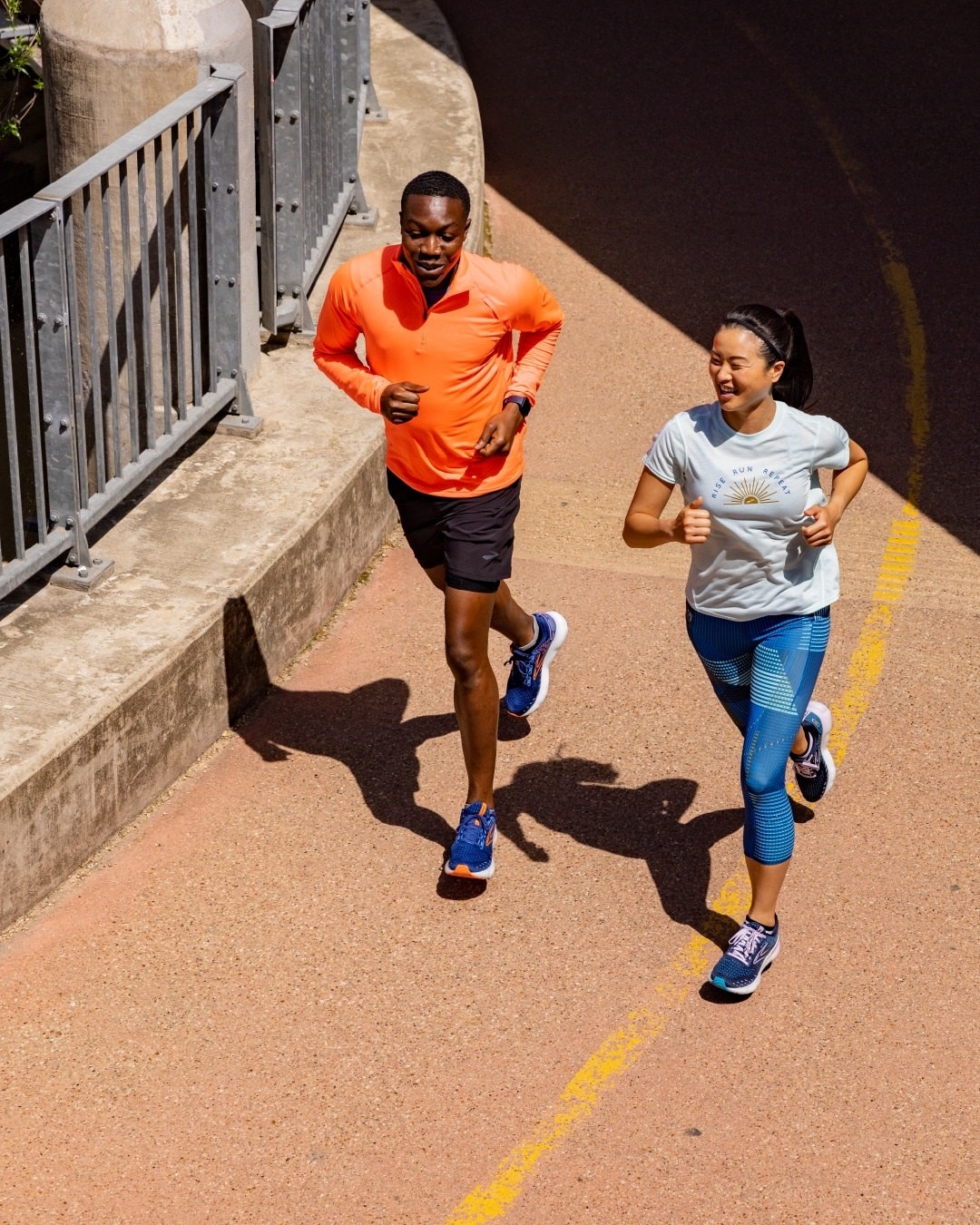1
HOME > Health & Fitness >
WHAT TO LOOK FOR IN A PAIR OF MEN’S RUNNING SHOES
Written by Ivan Yaskey in Health & Fitness on the 9th September 2022

Advancement often results in improved performance – but it can also create a plethora of difficult-to-navigate options. This is particularly true of running shoes: While we had a few leather-based options just a couple of decades ago, the pool now presents a range of materials, drops, and methods for impact absorption, with your gait additionally playing a role. So, where do you begin? How do you ensure you’re not ending up with something that will just result in blisters? If you’re shopping around for your first pair of men’s running shoes or something better suited to your goals and comfort level, here’s how to narrow down your search:
Design
To get started, running shoes aren’t that different from a pair of trainers in composition. Where they diverge is lightness and responsiveness – two characteristics that carry through all components:
Outsole: Occasionally called the “sole unit” in conjunction with the midsole, this is the textured surface that comes in contact with the ground and therefore provides traction and influences your stability. Rubber is traditionally used, although lighter models have started shifting toward EVA foam.
Midsole: You’ll see a piece of foam located between the outsole and the upper fabric. This area is known as the midsole, a component that both cushions your strides and absorbs impact when you land. Along with wearing-away treads, a compacted midsole eventually reduces your shoes’ performance. As well, thickness and firmness matter, as they influence responsiveness and how well your shoes align with your strides. Something too thick or too firm will end up getting in the way, while something too soft may mean you’ll get worn out sooner. You’ll also encounter “minimalist” running shoes with no midsole and cushioning, designed to replicate the feel of your natural, barefoot stride.
Upper: This applies to the fabric – usually polyester mesh or another textile – covering the top of your shoe, as well as any inlays added for support. Modern running shoes lean toward breathable construction to increase circulation.
Cushioning: Different from but working in conjunction with the midsole, running shoe manufacturers tend to be strategic with cushioning to absorb impact further, lessen the force felt when you land, and improve stability. You may spot additional cushioning by the heel or along the edge. Between this aspect and the midsole, you’re advised to try on a few pairs of running shoes in person.
Insole: Sometimes called a sockliner, this removable pad provides more arch support and cushioning. Based upon your foot’s shape, you may want to use the existing insoles, or have them replaced with a pair of orthotics.

Fit
Fit always makes the difference. With running shoes, comfort is just the tip of the iceberg. A poor fit can contribute to chafing and blisters, place additional stress on your joints, and increase injury risks. In terms of a good fit:
- Make sure you can wiggle and stretch your toes in the toe box.
- Aim for about half an inch of space in the forefoot and also in the toe box.
- Avoid bunching or straining material along the upper.
- Make sure the heel and ankle collar both remain in place, rather than slide around as you move.
The Drop
In fashion, we tend to refer to a “drop” as the release of a limited-edition streetwear collection. With running shoes, it pertains to the difference in height between the ball and heel of your foot. You want a pair that aligns with this difference and won’t obstruct your stride. Beyond comfort, this design lessens the force placed on your joints and weaker areas of your foot. With this in mind, drop also occurs in reference to cushioning. Extreme examples are zero-drop (0mm) shoes, with cushioning that places your heel and toe on the same level with the ground. No cushioning leads you to minimalist running shoes, which tend to have a higher number in relation to the difference between these two points. The average running shoe typically has a 10mm drop: In relation to cushioning and all other attributes mentioned above, this is the result of more cushioning located by the heel, with the assumption that you’ll be landing here with each stride. Lower numbers are ideal for landing on your midfoot and for reducing impact on this area by increasing the amount of cushioning.

Other Attributes
So you’re not left with blisters or running shoes that wear out too quickly, further factor in the following:
Where you’ll be running: Running shoes fall into two basic types based on location. This includes “road” for doing your routine on the sidewalk, street, jogging paths, or the treadmill. Trail running shoes are built to handle more rugged conditions, and are therefore equipped with greater water and abrasion resistance and toe protection.
Gait and support: As a general observation, your foot shouldn’t roll or shift around as you’re running. While most individuals don’t need support in this area and benefit from a neutral running shoe, control and stability features aid those with overpronated feet by adding additional support and including a flatter outsole.
When you try on your shoes: We’ve already mentioned that you should try on running shoes in person first. Yet, time of day matters. Aim for the end of the day, after your feet have swelled to their full size, and bring along a pair of socks. Should you try on a pair in the morning, they may feel too tight later on.
Don’t assume your size: Size variations exist between brands. As such, measure your feet ahead of time, and when you try on pairs in stores, put on both shoes and walk around a bit.
Don’t assume a break-in period: Don’t think that after you run a few times, a stiff, awkward-fitting pair of shoes will suddenly become comfortable. Rather, make sure that whatever you select fits naturally, without pitching, constricting, bunching, or rubbing against your foot.

Trending
2
3
4
5
6
7
8
9
10










